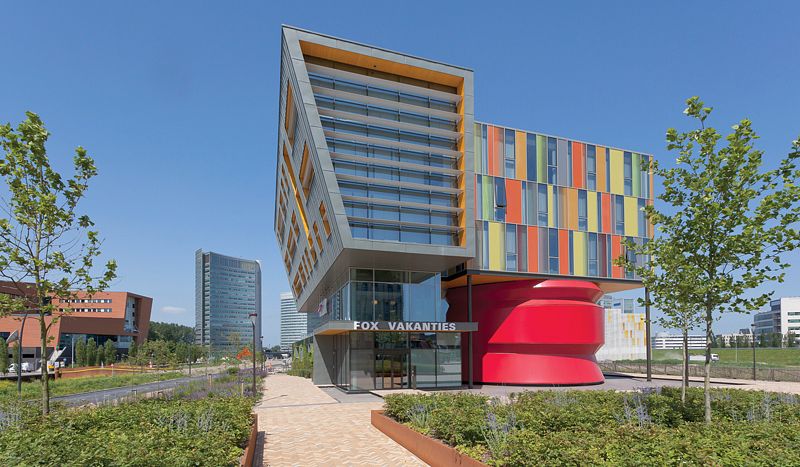Cradle-to-cradle guidelines in building practice lead to a different economy for developers, investors, and tenants. A TU Delft conference on ‘Circularity in the Built Environment’ explored the experiences.
For those who doubted the necessity of another approach to building, Professor Peter Luscuere (Faculty of Architecture and the Built Environment) shortly presented a list of impending crises. Peak-oil is one, as is peak-nuclear. The climate is changing, water is getting scarce and in twenty years we will have a lack of common materials as copper and zinc.
Instead of making matters worse, future buildings should strive for a ‘positive footprint’ concerning energy, water, topsoil and material use, said Luscuere. Buildings that produce more energy than they use already exist, as do building projects that make their environments greener. The key to better material use, Luscuere told his audience, is to start regarding waste as a resource.
That, of course, sounds very much like the basis of the cradle-to-cradle (C2C) philosophy from architect William McDonough and chemist Michael Baumgart.
But when Coert Zachariasse from Delta Development Group contacted McDonough in 2004 to know how to apply the C2C guidelines in the practice of building , McDonough told him it was too early to tell. Zachariasse was seized by the C2C idea and wanted to apply it to the Park 20|20 business park near Schiphol Airport. And he did. “We were inventing it while we went along”, Zachariasse told the audience at the symposium. “As long as the intentions are good, people come up with new solutions.” The park is now half-way built.
The project is not about selling offices, he proposed, but about providing shelter to businesses for 15-20 years. Taking into account the residual value of components, installations and materials changes the entire perspective. And the economy of building.
Elevators are a good example. If you’re just interested in selling the building, it’s the initial investment that counts and the cheapest option is the most attractive. The owner of the building will be interested in minimising maintenance costs. The elevator company may lower their price if they get a long-term contract for maintenance.
By leasing installations instead of buying them, Zachariasse involves partner companies for the long term. That long-term involvement changes the economics. “Cheap is a short-term concept”, said Zachariasse. Taking investment, costs of use and maintenance and residual value into account creates opportunities for more sustainable solutions. In order for that to happen, suppliers need to be open and transparent about their profit. “The process is about replacing distrust by trust and by redistributing value and cost in the chain.”
Zachariasse thinks this kind of circular economy can become a Dutch specialty. The step-by-step approach, the tradition of working together and the bottom-up attitude of the circular economy match the Dutch mentality quite well. “We need to do this, We can do this”, he said as he ended his talk.



Comments are closed.